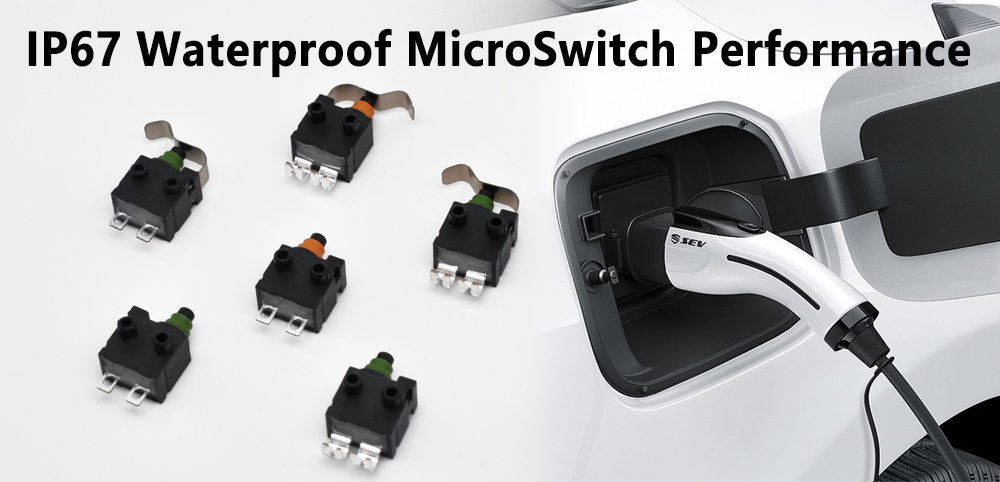What are the common faults of IP67 waterproof microswitches?
Various IP67 waterproof microswitches are basically common electronic switch components, and there are many details about the use of switches. If used improperly, it may cause malfunctions. So have you ever understood the causes of common faults of power switches? Next, I will analyze the common faults of microswitches:
Common fault one
During the use of the switch, it is also easy for some buttons to bulge or the buttons to become unable to be pressed. This is generally the cause of the failure caused by two situations. First of all, it is possible that during daily use of the switch, some tiny debris may accidentally fall into the switch, which will cause the switch’s shrapnel to be stuck by some debris, causing the switch button to bulge and become unable to be pressed. situation. So just clean the debris inside the switch. On the other hand, the internal spring piece is damaged due to excessive force in operating the key switch. Generally, it is only necessary to replace this spring element without replacing the entire switch.
Common faults 2
After the welding and wiring operation of the switch is completed, pay attention to the fact that the wiring points of each end of the switch have not yet completed solidification. Do not touch the wiring points of the switch to avoid easily disconnecting the wiring of the switch and causing unstable welding. status. Therefore, you generally have to wait until the solder joints of the switch have completely cooled down before you can check the welding condition of the switch.

Common fault three
Generally, do not press buttons or switches when your hands are wet, as this can easily lead to electric shock accidents. The second thing is that if water vapor invades the inside of the switch, it will easily cause the components inside the switch to get damp and rust, affecting the performance of the switch.
Common fault four
I believe that when using IP67 waterproof microswitches, everyone usually encounters a situation where the switch button does not respond when pressed. There are generally two situations for this kind of failure problem. First, on the one hand, the button switch may be too strong. As a result, the induction shrapnel inside the switch is damaged, causing the key switch to become unresponsive when used. Secondly, it is possible that if the switch is in a humid environment, the shrapnel inside the switch will be easily affected by moisture and oxidized. Therefore, the switch may have a different conduction or no response. Therefore, when we use the switch, we must first pay attention to the operating strength of the key switch, and secondly, pay attention to measures such as moisture-proofing the switch.
How to use waterproof microswitches correctly?
-
How to operate the waterproof micro switches
(1) Do not apply strong force and perform repeated operations. If further pressure is applied while the handle button is already pressed, excessive load weight may cause deformation of the reed (spring), causing malfunction.
(2) Especially if an excessive load is applied to the horizontal pressure type, the riveted part will be damaged, which may cause damage to the micro switch. Therefore, during installation and operation, please be careful not to add a load weight higher than the excessive load weight (29.4N, 1 minute, 1 time).
(3) Please press the handle to set the switch in the vertical direction. Pressing only one side of the handle or operating it diagonally may result in reduced durability.
-
Countermeasures against dust in waterproof micro switches
Since the switch has no sealing structure, do not use it in places with dust. If use is unavoidable, protective measures such as coverings should be considered.
-
The waterproof micro switch printed circuit board should be used as a standard single-sided substrate with t=1.6mm.
(1) When using substrates of different thicknesses or double-sided perforated substrates, it may affect the switch’s fitting clearance, substrate instability, and solder joint heat resistance. These will vary depending on the perforation and substrate design, so it is recommended to implement carry-out confirmation tests.
(2) When you install the switch on the printed circuit board and perform the circuit board dividing operation, scattered circuit board powder may enter the inside of the switch, so please be careful. In particular, if substrate separation powder or foreign matter adheres to the switch due to the surrounding environment or workbench, container, or substrate overlapping prevention, it is likely to cause poor contact.
Application of microswitches
Microswitches are used for automatic control and safety protection in equipment that require frequent switching of circuits. They are widely used in electronic equipment, instrumentation, mining, power systems, household appliances, and electrical equipment, as well as aerospace, aviation, ships, missiles, Tanks and other military fields have been widely used in the above fields. Although the switch is small, it plays an irreplaceable role.
At present, the micro switches on the domestic market depend on different usage requirements. The mechanical life of waterproof microswitches ranges from 3W times to 1000W times. Generally, there are 10W, 20W, 50W, 100W, 300W, 500W, and 800W times. In China, beryllium bronze, tin bronze, and stainless steel wire are generally used as reeds. Foreign ALPS can achieve 1000W times. Their reeds are made of rare metal titanium.
Waterproof microswitches can be used in computer mice, car mice, automotive electronics, communication equipment, military products, testing instruments, gas water heaters, gas stoves, small household appliances, microwave ovens, rice cookers, float equipment, medical equipment, Building automation, power tools and general electrical and radio equipment, 24-hour timers, etc.
